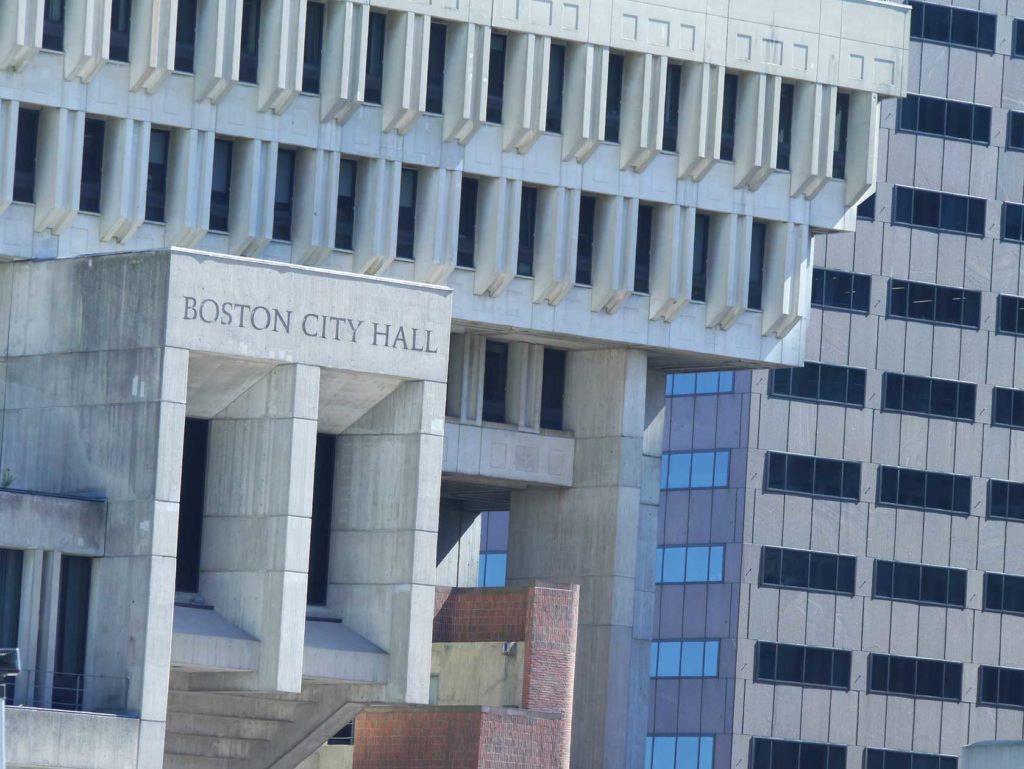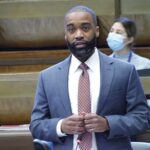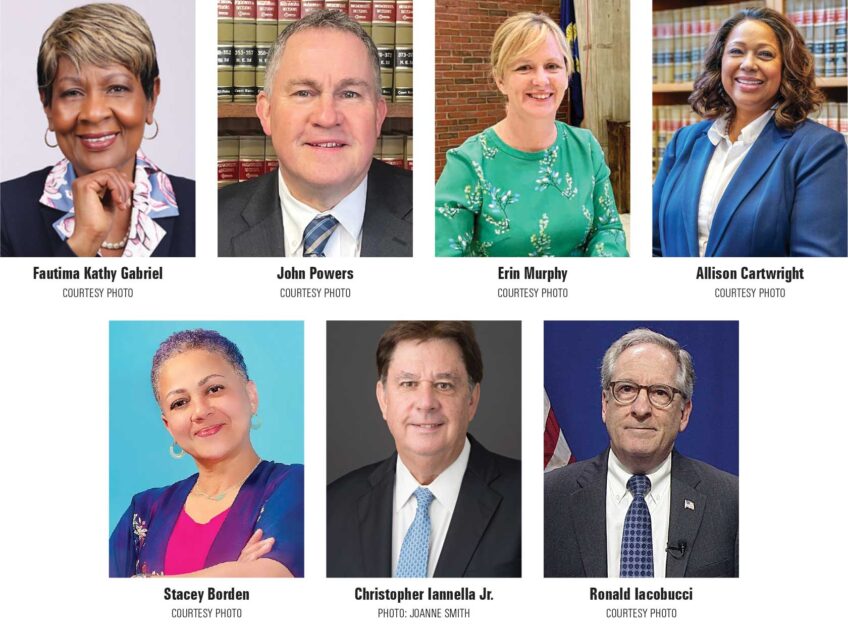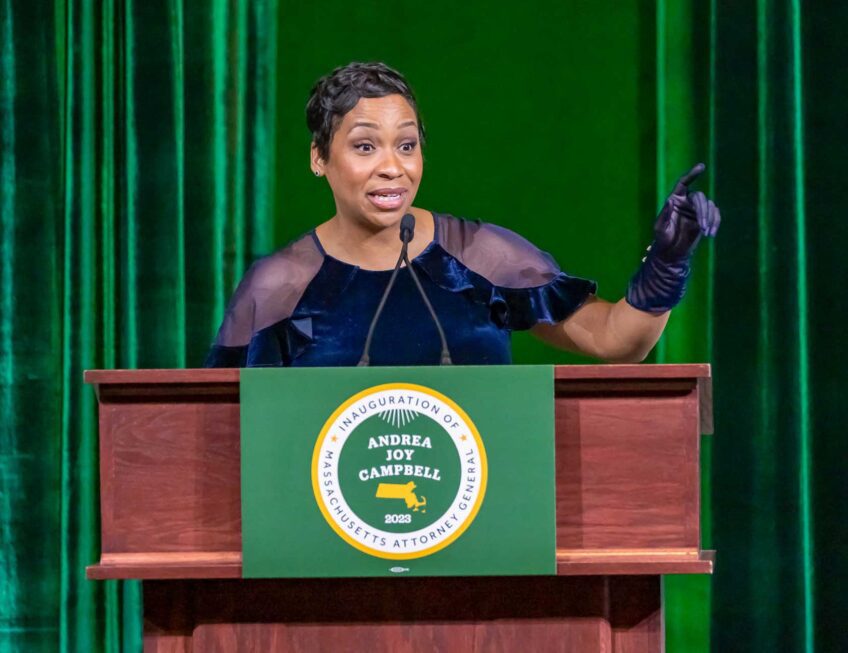
A longstanding racial divide on the City Council has moved to center stage as the 13 members of the body debate the redrawing of the city’s nine council districts.
The roots of the divide, which has pitted a coalition of Black, Latino and Asian activists and the Black and Latino members of the council against four Irish American members of the body, go back decades to when the council shifted from an all at-large structure to its current part district, part at-large makeup, which then made it possible for two Black members to join the body.
The districts
In 1981, Boston voters opted for the four-at-large, nine-district seat structure that the council uses today. The nine districts that were drawn based on the 1980 census have evolved by degree but remain fundamentally unchanged. The racial politics in the city, however, have evolved substantially.
In 1983, there were just two majority-Black districts: District 7 which was centered in Roxbury and included parts of the Fenway and the South End and District 4, which was centered in the predominantly Black side of Dorchester, keeping shy of Dorchester Avenue and Lower Mills, which in the 1980s were solidly white sections of the neighborhood. Both seats have always been represented by African Americans.
The other seven districts included four that for decades were represented by Irish American councilors and two that had Italian American representation. (After Thomas Menino was appointed mayor in 1993, District 5 in Hyde Park toggled between Irish American and Italian American representation). Over the first 37 years of district representation, Irish Americans held between seven and 10 of the council’s 13 seats.
The district borders have changed little over 40 years and appear to have been drawn in such a way as to preserve the political power of certain neighborhoods at the expense of others. District 2, for example, includes South Boston, but also Chinatown and a portion of the South End. It has always been represented by Irish American men from South Boston.
Some neighborhoods, including the South End, Chinatown, Charlestown, Roslindale and Mission Hill, have never seated a district councilor.

Redistricting Committee Chair Liz Breadon leads a working session of the City Council Monday. PHOTO: ANNA LAMB
A changing council
The demographic shift on the council came gradually after the 2000 census revealed that people of color in Boston for the first time outnumbered whites. In 2004, Felix D. Arroyo became the first Latino elected to the council and the first person of color to win an at-large seat since Bruce Bolling did so in 1980. In 2006, Sam Yoon became the first Asian American elected to the body. At that point, there were four people of color on the body, a group that campaigned together and referred to themselves as Team Unity. With just four votes out of 13, their policy initiatives, such as channeling funding from the police budget to social services, were consistently opposed by the white majority on the council.
It wasn’t until 2020 that the councilors of color had six votes, enough to partner with one progressive white and counter the more conservative-leaning Irish American and Italian American councilors. The current council maintains that six-vote bloc. In addition, white progressives, including District 9 Councilor Liz Breadon and District 8 Councilor Kenzie Bok, often side with the councilors of color. In the current redistricting stand-off, that flipped dynamic had the Black, Latino and white progressive councilors holding at least seven votes — enough to pass the so-called “unity map” being pushed by people-of-color-led organizations. Opposition to the map comes from the four Irish American councilors — District 2 Councilor Ed Flynn, District 3 Councilor Frank Baker and at-large councilors Michael Flaherty of South Boston and Erin Murphy of Dorchester, along with District 4 Councilor Brian Worrell, who has voiced concerns that a reduction in the 90.5% supermajority of people of color in his district to 85.5% might jeopardize his chances at re-election.
Racial overtones?
Beyond the historic split between Irish American councilors and their Black and Latino colleagues, race has come into the debate over district lines in response to the composition of District 4. Voting rights activists and some councilors say the concentration of people of color in that district could lead to a lawsuit. Under the federal Voting Rights Act, concentrating people of color in a district violates the rights of ethnic minorities by limiting their ability to win or influence the vote in adjacent districts.
The voting rights activists’ call to move predominantly white precincts from the Cedar Grove and Neponset neighborhoods into Worrell’s district has sparked fierce backlash from some residents of those precincts as well as from Councilor Baker, who said the map would split the Roman Catholic parishes on which he says the neighborhood’s district lines were originally drawn.
Baker and other white Dorchester residents also asserted that the activists’ map would divide veterans — who are not a protected class in the Voting Rights Act — into two districts, although they offered no proof that there are fewer veterans in the predominantly Black and Latino side of the district.
Murphy, who is not a district councilor, presented her own map that would have shrunk the white population in District 4 from 9.5% to 6.5%.
On the South Boston side, the discourse was somewhat different. Flynn argued that placing some of the precincts with public housing projects into the Dorchester-based District 3 would divide people of color living in South Boston and make his district less diverse. But with a surplus of 13,480 residents, his district needs to shed precincts. While he has suggested offloading nine precincts, many of those would add to districts 1 and 8, which are already overpopulated. Flynn has so far been unwilling to part with precincts in South Boston or those in the South End containing public housing developments.
The new racial reality
The drawing of districts is an exercise in determining what communities have the most power to put people in office. The dispute between the white councilors and councilors of color aside, none of the changes being proposed in the unity map would fundamentally alter the nature of the districts. South Boston will remain the most populous and powerful community in District 2.
But the fact that the Irish American councilors are essentially playing defense against a broader array of Black, Latino and progressive white councilors and activists points to a profound change in the city’s politics. Over the last 10 years, many of the white working-class voters who made South Boston, Dorchester’s predominantly white precincts, and neighborhoods such as Readville and Charlestown into political strongholds for Irish American politicians have been priced out of the city. The higher-income white professionals who have replaced them do not share the same political allegiances. In the new political landscape, candidates of color have fared better than ever before, picking up wins in East Boston, Hyde Park and citywide. The council district lines have less to do with who is elected than they did 40 years ago.
When Flynn removed District 5 Councilor Ricardo Arroyo from his chairmanship of the redistricting committee for 60 days and replaced him with District 9 Councilor Liz Breadon in late August, the move was widely seen as a play to take control of the process out of the hands of councilors of color. But Breadon, who was born in Ireland, not in Boston, has supported the coalition map and co-sponsored with Arroyo the version of the map the council will likely vote on and pass this Wednesday.







